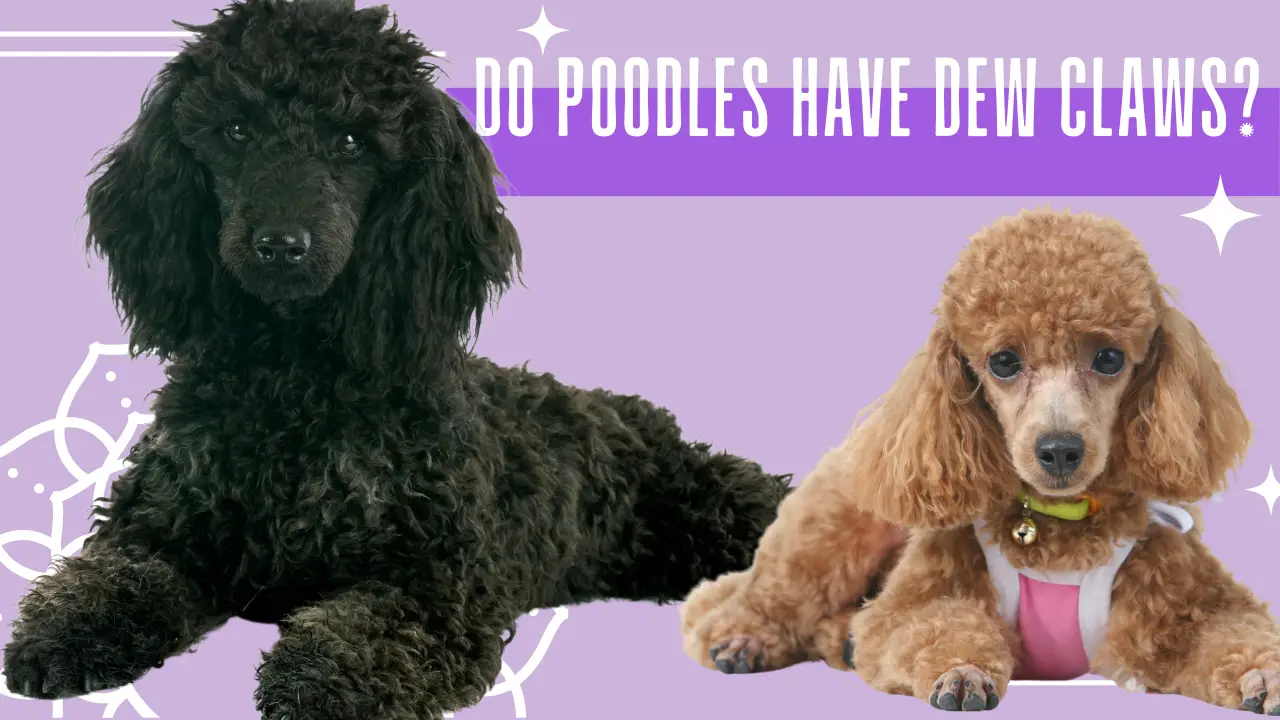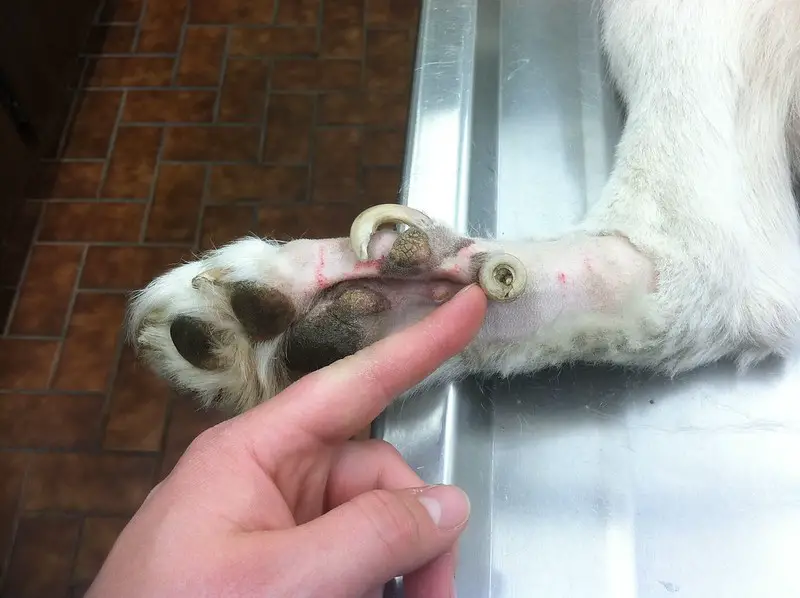Most Poodles are born with dew claws. If you have a standard, miniature, or toy poodle, these dogs usually have four toes with a single dew claw on their front paws.

Dew claws are a small, extra toe located on each of a poodle’s front paws at the inner hock or ankle level. Dew claws are made from bone, tendon, nerves, and flesh. They can even wiggle a little although it has less strength than a poodle’s other toes.
Dew claws are like the dog’s thumb. This extra digit, located partway up the leg, might look strange to many dog owners, but dew claws form a healthy and practical function.

Read our Smart Poodles - Smart Tricks eBook for only $2.99
Dive into a treasure trove of engaging tricks and tips designed specifically for your poodle!
They give poodles extra grip and traction when running, climbing, or crossing slippery ground. A poodle without dew claws might find it harder to grasp objects.
Do Poodles Have Rear Dew Claws?
Although many other dog breeds are born with both front and rear dew claws, poodles typically only have dew claws on their front paws.
Some experts think that poodles may possess the gene needed to grow rear dew claws buried deep in their genetics. While purebred poodles are unlikely to produce this gene, some mixed poodle breeds might have the ability.
If your poodle does have rear dew claws, it’s safe to leave them intact. In some cases, poodles might have double dew claws or a rear dew claw that causes problems. In that case, talk to your vet about care solutions or options for dew claw removal.

While rear dew claws appear to be non-functional in most dogs, opting to not remove either front or rear dew claws won’t harm your pet.
Should Poodles Have Their Dew Claws Removed?
It’s never an easy topic to discuss elective surgery to remove a body part. It’s a difficult and controversial part of the commercial dog breeding world. If you have a show poodle, you might notice that its dew claws are already removed.
When puppies are born, their dew claws just look like soft nails. It’s easy to think that dew claws are just attached by a piece of skin. In fact, removing dew claws is a surgical procedure that requires cutting through bone, tendons, and nerve endings.
Breeders usually remove dew claws from newborn poodles 3-5 days after birth when they dock poodles’ tails. This is because the dew claw will continue to grow into an extra digit and require trimming and upkeep just like any other toenail.
Although the debate around poodle dew claws has favored removing the fifth digit for some time, experts consider that it’s often unnecessary to remove dew claws. Some countries, including France, Germany, Italy, Austria, Switzerland, Norway, Ireland, Finland, Denmark, Belgium, Spain, Australia, and the UK have even banned dew claw removal.
Dew claws typically pose no risk to your poodle’s health. They may even help your dog perform better with daily activities. Many veterinarians advise leaving the dewclaws alone under normal circumstances if they don’t pose any risks for infection or injury.
If your poodle has dew claws and you don’t want to get them removed, you can just keep your pet’s nails trimmed regularly to avoid any problems.
If you want to have your poodle’s dew claws removed, it’s best to get this done by a professional.
Cracks or breaks in the dew claw are common and can be caused by a variety of factors, including trauma or simply being caught on something. While minor injuries may heal on their own with proper care, repeated injuries to the same dew claw can become a serious problem and affect the dog’s quality of life.
In such cases, your vet may suggest the removal of the dew claw for medical reasons. While dew claw removal is a surgical procedure, it can prevent future injuries and discomfort, and ultimately improve the dog’s overall well being. I always recommend that dog owners discuss the risks and benefits of dew claw removal with their veterinarian before making a decision.
All invasive surgery that causes an incision into a dog’s body comes with some risk level. All medical procedures should include anesthesia, a sterile environment, and post-surgery pain medication to avoid infections and keep your poodle comfortable while he or she heals.
Marko is the founder and author at PoodleHQ, where he blends profound expertise with formal training in Animal Behavior and Canine Genetics. With multiple generations of poodles under his care, he’s a breed connoisseur, honored with the Canine Care Excellence Award and lauded by the International Pet Enthusiasts Association.

